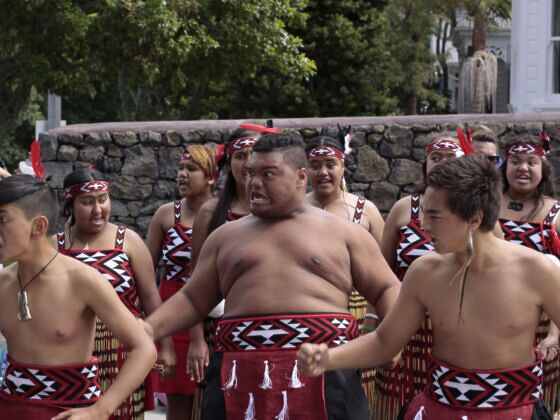The haka is a traditional dance of the Maori people of New Zealand. It is best known for being performed by the national rugby team, but it has been an important part of Maori culture for centuries. To an outside observer it may look intimidating, but there’s a beautiful tradition behind the haka dance that’s worth learning even if you aren’t planning a trip to New Zealand.


The Meaning Behind the Haka, New Zealand's Mesmerizing Maori Dance
@matadornetwork There’s something truly mesmerizing about the haka—an ancient #Māori cultural dance traditionally used to challenge an enemy. There are different types of haka with various meanings and may be performed for visiting dignitaries or to honor local heroes, but they are used to celebrate great occasions or achievements within a group. Learning and performing the #Hakadance is more than just a way to show appreciation – it's an amazing tradition steeped in meaning. It is a symbol of strength, unity, and courage that has been passed down for generations. Share this with someone who needs to see this beautiful traditional dance! 🎥 @papa.and.pepe #haka #thehaka #culturadance #traditionaldance #maoritiktok ♬ original sound – Matador Network
The haka is thought to have originated in Polynesia, with the earliest known form being performed in 1250 A.D. Over time, it evolved into a type of war dance that was used as both a form of entertainment and a way of intimidating enemies on the battlefield. Today, it continues to be used in warfare and also as a ceremonial dance at weddings, sporting events, and other important gatherings.
The movements and facial expressions used in the haka are intended to convey strength and courage. They often include stomping feet, slapping hands against chests, thrusting tongues outward, and shouting loudly. Each movement has its own meaning within the context of Maori culture—foot stamping is meant to show strength, while tongue thrusting is symbolic of defiance—but all converge to create an overall feeling of power when performed as part of a group. The intensity of the performance varies depending on the occasion; while some performances are more subdued, others are frantic and full of energy.
To learn how to perform a haka yourself, there are plenty of opportunities available throughout New Zealand. Classes and workshops are available where visitors can learn from local experts in Maori culture. If you’d prefer something more intimate or tailored towards your own interests, private workshops can also be arranged with local guides, who specialize in teaching visitors about this traditional form of dance and storytelling.